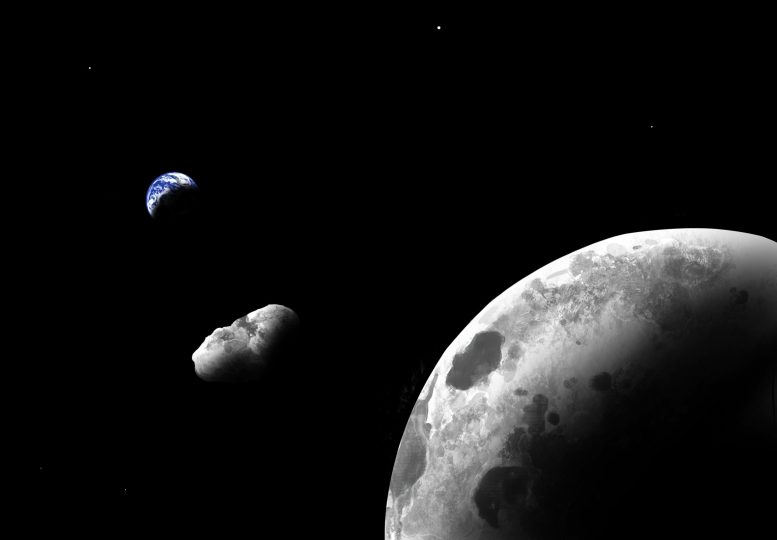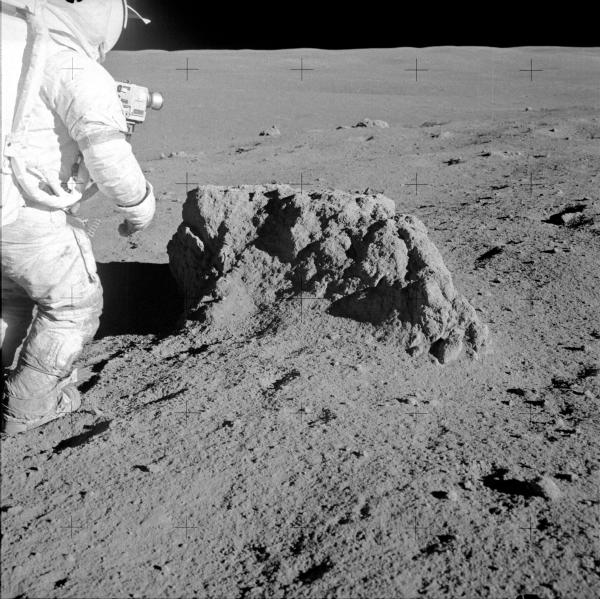
An artist impression of Kamo'oalewa near the Earth-Moon system. Credit: Addy Graham/University of Arizona
According to a team of Arizona-based astronomers that includes Lowell Observatory’s Audrey Thirouin, the space rock known as Kamo’oalewa might be a fragment of the Moon. If so, it is the only confirmed orbiting object comprised of lunar material, except the Moon itself.
Asteroid 469219 Kamo’oalewa (2016 HO3) is a quasi-satellite of Earth, a type of small body that orbits the Sun but stays relatively close to Earth. Only a handful are currently known, and scientists don’t know a lot about them because they are faint and the geometry of their orbits limits their observability.
Scientists discovered Kamo’oalewa in 2016 using the Panoramic Survey Telescope and Rapid Response System (PanSTARRS-1) observing facility at Haleakala Observatory in Hawaii. The name is of Hawaiian origin and means “wobbling celestial object”, a reference to the object’s oscillating movement across the sky as seen from Earth.
Kamo’oalewa measures approximately 165 feet in diameter. It rotates rapidly—once every 28 minutes—and takes a year to orbit the Sun. Its distance from Earth ranges from nine million miles (this is about 38 times the distance from the Moon to Earth) to 25 million miles. It is very faint—about four million times fainter than the faintest star visible to the human eye. This means astronomers need very large telescopes to observe it, when it’s located in a place visible from Earth.

In determining the composition of Kamo’oalewa, the team of scientists found that it seemed to closely match that of rocks collected from the Moon by Apollo 14 astronauts Alan Shepard and Edgar Mitchell. To confirm these findings, they used two large Arizona telescopes—the 8.4-meter Large Binocular Telescope in southern Arizona and the 4.3-meter Lowell Discovery Telescope (LDT) near Flagstaff—to make follow-up observations in 2017. More observations followed in 2019 but not in 2020 due to COVID-related closures to observing facilities. The team again observed Kamo’oalewa in 2021. The follow-up work confirmed the apparent lunar nature of Kamo’oalewa.
One big question that needs answering: if Kamo’oalewa is indeed of lunar origin, how did it get to its current location? Perhaps Earth’s gravity plucked it from the general population of so-called near-Earth objects that reside near Earth. Or perhaps it was ejected from the lunar surface by an impacting body. The answer may be on the horizon, as China’s national space agency is planning a robotic mission to Kamo’oalewa in 2025 that would return samples.
A paper detailing the findings is available here.